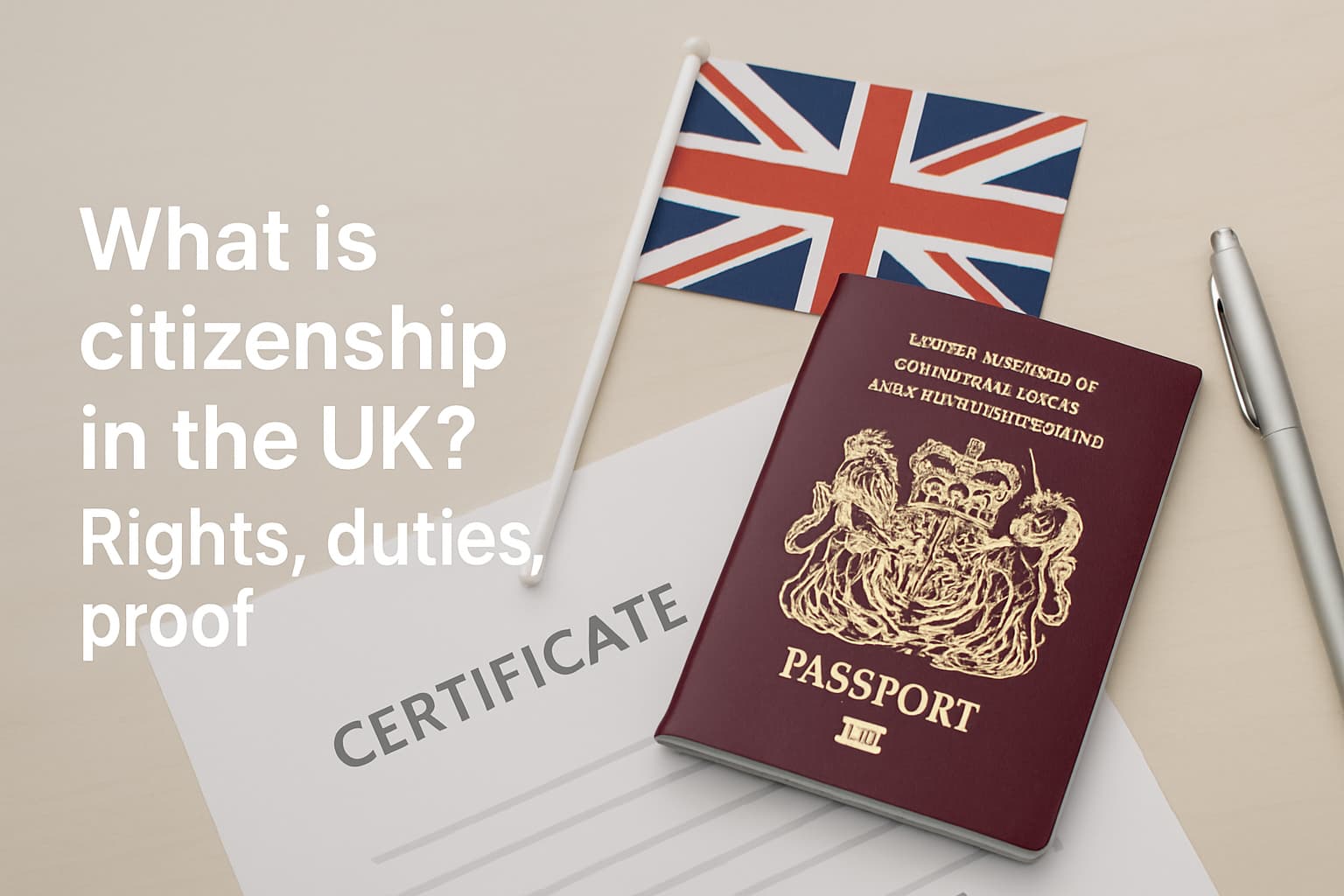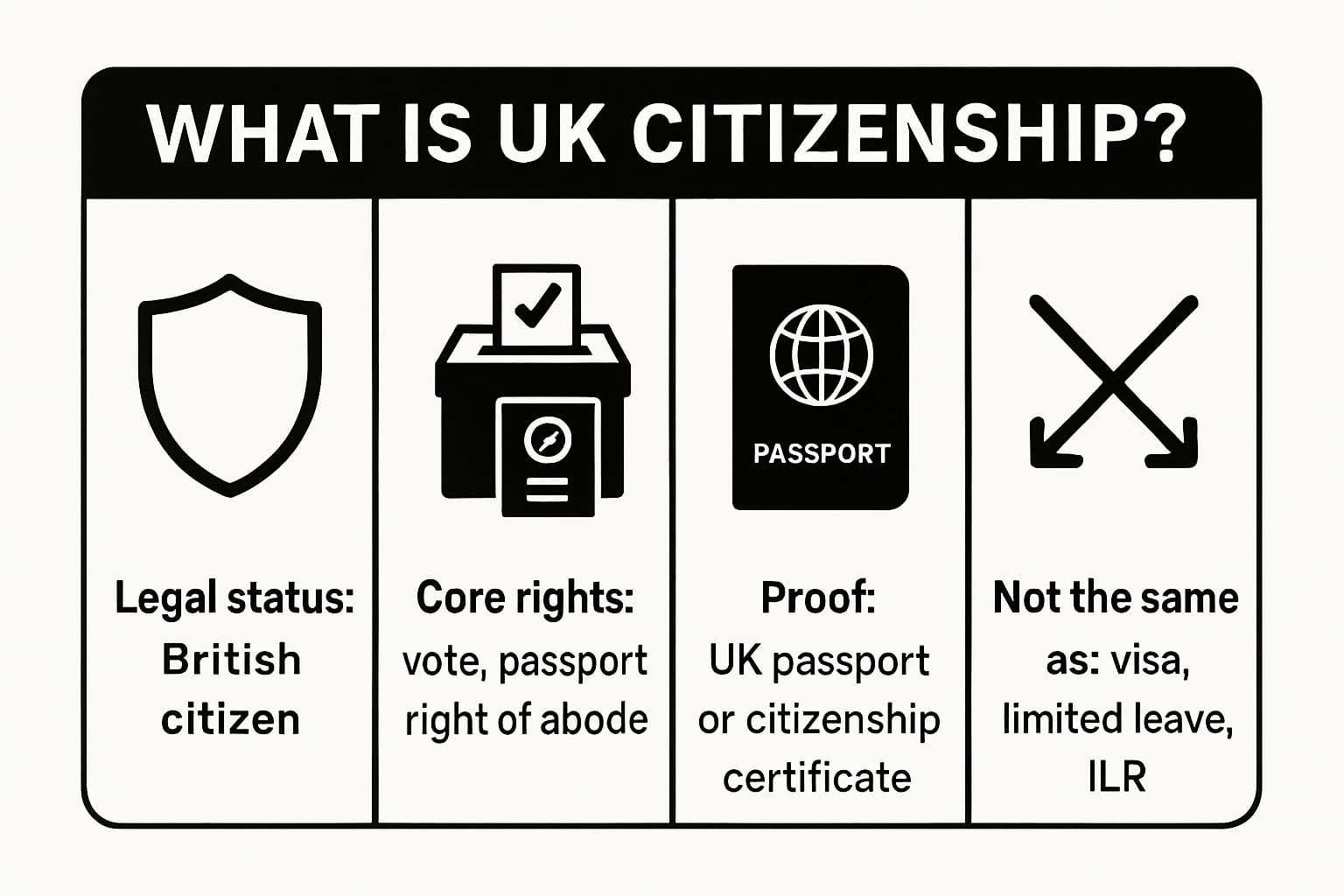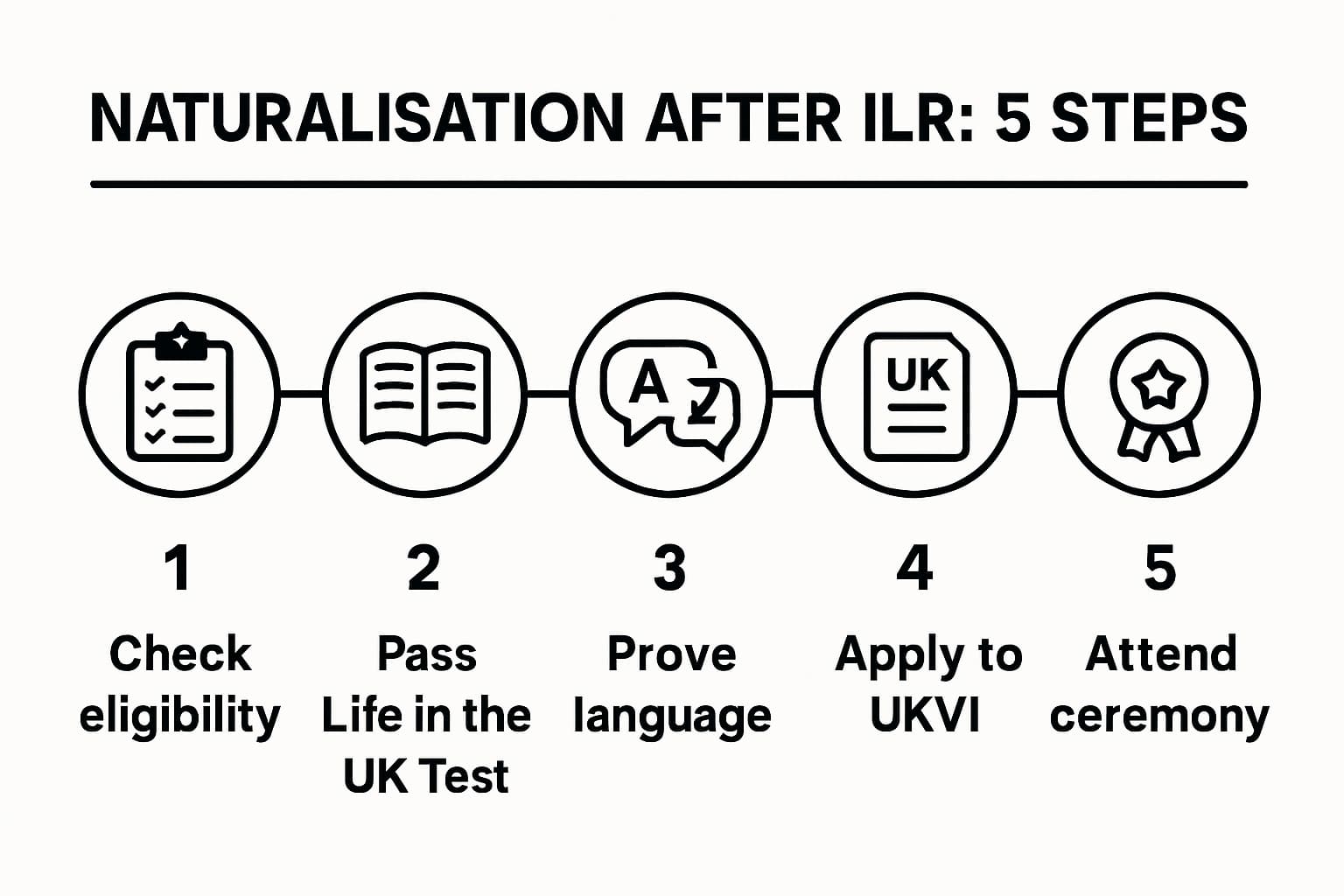What is citizenship in the UK? Rights, duties, proof

Confused about what citizenship means in the UK, what rights it gives you, and how to prove it? You are not alone. This guide cuts through the jargon so you can make confident decisions about status, paperwork, and next steps.
We start with a plain-English definition of what citizenship is, show the rights and responsibilities it carries, explain how to prove it, outline how people become citizens, and finish with a practical action plan. If you are preparing for the Life in the UK Test, you will also find focused tips and an app that helps you pass on the first attempt.
Start here: what is citizenship, exactly?
Definition (short answer): UK citizenship is a permanent legal status that makes you a British citizen with the right of abode in the UK. It grants full civic rights (including voting and standing for office) and the ability to hold a British passport. It is not the same as a visa or indefinite leave to remain (ILR).
When people ask what is citizenship or specifically what is citizenship UK, they are usually trying to understand whether citizenship gives anything beyond ILR. It does: citizens have unconditional re-entry and political rights, extra stability, and access to a British passport.

Citizenship vs immigration permission
Citizenship is a nationality status. Immigration permission (visas, limited leave, ILR) is a residence status that can be temporary or permanent. Here is a quick comparison:
| Status | Can you be removed? | Re-entry limits | Vote in UK general elections? | British passport? |
|---|---|---|---|---|
| Visitor/temporary visa | Yes | Must apply each time your visa ends | No | No |
| Limited leave to remain | Yes | Absence and renewal limits apply | No | No |
| Indefinite leave to remain (ILR) | Possible in specific circumstances | Usually lose status after 2 years away (5 for some EU routes) | No | No |
| British citizen | Unusual; deprivation is rare and limited by law | Unlimited right to return (right of abode) | Yes | Yes |
ILR is a significant milestone, but citizens have stronger protections and political rights. See our Indefinite Leave to Remain roadmap if you are still working toward settlement.
Your rights as a British citizen
Here is what citizenship means in practice:
- Right of abode: live in the UK without immigration time limits or re-entry restrictions, under the Immigration Act 1971. See the Home Office’s explanation of rights in the British citizenship guidance.
- British passport: travel internationally on a UK passport and return freely.
- Full civic rights: vote and stand for office; access public services. A concise overview of benefits appears in the London.gov citizenship guide.
- No work restrictions: work for any employer or be self-employed.
- Consular protection abroad: get help from UK diplomatic posts when needed.
Political rights: voting and standing for office
British citizens can vote in all UK elections and referendums and stand for public office. Note that some non-citizens also have voting rights: Irish and eligible Commonwealth citizens can vote, but cannot obtain a British passport or right of abode without citizenship.
Mobility: British passport and right of abode
Citizens can enter and leave the UK without immigration control thanks to the right of abode, and can hold a British passport. The Home Office explains this status in its citizenship guidance.
By contrast, settled status has absence limits: for example, ILR can usually lapse after 2 years away (5 for EU Settlement Scheme). Citizenship removes those re-entry limits.
Security: consular help and stability
Citizenship provides long-term stability and access to consular assistance overseas. While deprivation of citizenship exists in law, it is limited and citizens are not usually deportable.
Your responsibilities as a citizen
Citizenship is also about values and participation — the same civic principles covered in citizenship education and assessed in the Life in the UK Test. At your ceremony you promise to respect the UK’s rights, freedoms and laws.
Jury service, obeying the law, taxation
- Jury service: citizens may be called to serve if eligible.
- Rule of law: obeying the law and respecting others’ rights.
- Paying taxes and NI contributions: funding public services. For context, you usually need 10 qualifying years of National Insurance to access the new State Pension.
Community participation and integration
Everyday actions — volunteering, voting, engaging with local services — reflect citizenship studies themes. This is why the Life in the UK Test includes history, institutions, and life across the UK’s nations. Learning these topics is part of becoming a confident, informed citizen.
Proving you’re a British citizen
There are several accepted ways to prove UK citizenship. The Home Office notes the burden of proof sits with the applicant and decisions are made on the balance of probabilities.
- Valid British passport: the most widely accepted proof for travel and right-to-work checks.
- Certificate of naturalisation or registration: official evidence of becoming a citizen, usually used with other ID.
- British citizen by birth: typically if born in the UK when a parent was a British citizen or settled. If you had a child while settled, they are normally British automatically at birth (see ILR guidance).
- By descent: born outside the UK to a British citizen parent; rules vary.
- Other British nationalities: for example, British Overseas Territories citizens can hold a British passport and get consular help, but without British citizenship are still subject to UK immigration control.
British citizenship certificate explained
A certificate of naturalisation (for adults) or certificate of registration (often for children and certain historical cases) is issued after your application is approved and you attend the ceremony. It confirms the exact date you became a British citizen and the route (naturalisation or registration).
You will need this certificate to apply for your first British passport. For a walkthrough, see our guide: How to apply for your first British passport.
Passport vs certificate: which to use and when
- Travel: use your UK passport. Certificates are not travel documents.
- Right to work and rent checks: a valid passport is usually sufficient. A certificate may be requested to confirm acquisition, but normally alongside photo ID.
- Banking, benefits, housing: organisations typically prefer a passport for identity and status. Keep the certificate safe; it is often needed for future applications and replacements.
How people become citizens: routes and rules
Adults without an automatic claim usually become citizens by naturalisation. Children commonly become citizens by registration. Current policy context (2025) is set out across Home Office guidance and the Naturalisation Guide AN (Sept 2025).
- By birth in the UK: generally automatic only if at least one parent was British or settled at the time of birth.
- By descent: born abroad to a British parent (rules differ depending on whether the parent is British by descent or otherwise than by descent).
- By registration: a flexible route for children and for some adults who qualify due to circumstances or historical injustice. Section 4L creates a route where you would have been able to become British but for past unfairness or errors; see the government’s Section 4L guidance. People registered under Section 4L are British otherwise than by descent, meaning they can pass citizenship to children born abroad (confirmed in the same guidance).
- By naturalisation: the standard adult route after a qualifying period of lawful residence and settlement.
Naturalisation after ILR/PR
Typical eligibility includes:
- Residence period: usually 5 years lawful residence (or 3 years if married to a British citizen) to reach settlement, then 12 months with ILR before applying, unless married to a British citizen (Gov.uk overview; see also ILR guidance).
- Absence limits and continuity: you must not exceed permitted days outside the UK.
- Good character: assessed by UKVI.
- Knowledge of Language and Life (KoLL): pass the Life in the UK Test and show English, Welsh or Scottish Gaelic ability (Guide AN 2025).
- Processing and ceremony: decisions often arrive within about 6 months, followed by a mandatory citizenship ceremony (Guide AN 2025).
Plan your route with our step-by-step explainer: How to get British citizenship. If you are earlier on the journey, start with Indefinite Leave to Remain: Your Roadmap.
Children: registration and special cases
- Born in the UK: often automatic if a parent was British or settled at birth. Otherwise, many children can be registered later (for example, after living 10 years in the UK).
- Born abroad: usually British if a parent is British otherwise than by descent, or via registration routes where eligible (including Section 4L for historical unfairness; see Section 4L guidance).
The Life in the UK Test: principles in practice
The test checks your knowledge of UK values, history, and institutions — core themes of citizenship education and citizenship studies. You will answer multiple-choice questions on topics like the government, culture, and everyday life.
- Purpose: demonstrate understanding of life in the UK and readiness to integrate.
- Format: a timed, computer-based multiple-choice exam.
- Pass mark: 75%.
- Who needs it: most ILR and naturalisation applicants. Learn the essentials in What is the Life in the UK Test?
Prepare the right way (no “past papers”)
There are no official past papers for the Life in the UK Test. Instead of hunting for outdated PDFs, use accurate study material based on the official handbook and realistic live tests and mocks. High-quality practice questions with detailed explanations will save you time and reduce retake risk.
Use the Life in the UK Test App
If you are short on time or overwhelmed by content, the Life in the UK Test App keeps prep simple and structured:
- Complete official handbook content, optimised for mobile learning.
- Brit-Bear smart tutor to focus your study on weak areas.
- Readiness score so you know exactly when you are test-ready.
- 650+ quality questions with explanations, plus hard-mode mock live tests.
- Offline access — study on the bus, at lunch, or on night shifts.
Download on the App Store | Get it on Google Play

The citizenship ceremony and pledge
After approval you must attend a ceremony, make an oath or affirmation of allegiance to the Crown, and a pledge to respect the UK’s rights, freedoms and laws. The event typically includes a short presentation, the oath/affirmation, and receipt of your certificate. The Home Office notes most decisions arrive within about six months and a ceremony is required (Guide AN 2025).
FAQs: quick fixes to common issues
Can I hold dual citizenship?
Can citizenship be removed?
Do I need the Life in the UK Test for ILR and citizenship?
How long can I stay outside the UK with ILR?
What proof do employers accept for right to work?
Action plan: from status check to next steps
Use this quick checklist to move forward with confidence.
- Confirm your current status. Are you on a visa, ILR, or already a citizen? If on the journey, review the ILR roadmap.
- Check naturalisation eligibility. Time in the UK, absences, good character, and KoLL. See how to get citizenship and the official Guide AN 2025.
- Prepare for the Life in the UK Test. Read the handbook and practise realistic mock live tests. Learn what the test involves and use the app below.
- Apply for naturalisation or registration. Submit evidence and pay the fee. Track timelines; decisions usually take up to ~6 months.
- Attend your ceremony. Make the oath/affirmation and receive your certificate.
- Get your passport. Use our first British passport guide.
Ready to study smarter, not longer? Download on the App Store | Get it on Google Play